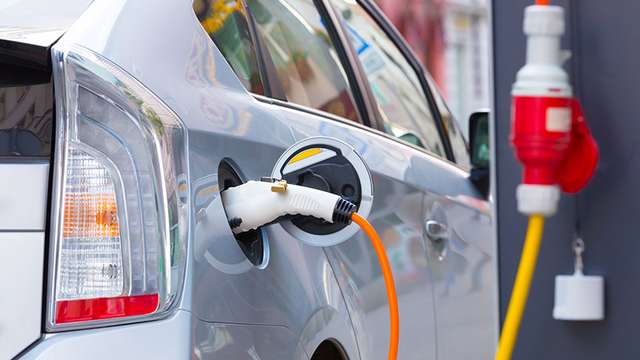- electric vehicles
Learning EV terminology

Updated 11 Oct 2019
Rowan Johnstone

If you’re like me, you’re probably not completely up to speed with the world of electric vehicles (EVs). We’ve gone from engines to batteries and refuelling to recharging, and that’s barely scratching the surface of EV terminology flying around today.
So here’s a beginners guide to some basic and common EV terms. These may or may not help you stay on the same page as the car salesman if you choose to go look at an EV at a dealership.
AC
- Nope, this doesn’t stand for air conditioning in EV language. It’s actually referring to ‘alternating current’. Basically, it’s an electrical current used in power supplies that switches it’s direction back and forth at regular intervals.
Ah
- This stands for ‘amp hours’ and will usually be presented with a number in front of it, e.g., 320 Ah. A battery’s capacity is measured using amp hours.
Charging
- This one is obvious. EV owners need to charge their cars using electricity, instead of visiting a petrol station and refuelling.
Charging point
- Locations where an EV can be charged. These charging points can be at home, at work, in designated parking spots in public spaces and so on.
DC
- Direct current. This is the type of electricity that flows in one direction. This is the power that is produced by batteries.
EVSE
- Electric vehicle supply equipment. Used to charge EV and PHEV vehicles.
Fast charging
- The fastest way to charge an EV using a direct current. An average EV could be fully charged in 40 minutes using this method.
HEV
- Hybrid Electric Vehicle. These are cars that use both a small electric motor and generator, paired with an internal combustion engine (ICE), allowing the car to be more fuel efficient without going full electric. The ICE charges the battery (no requirement to plug in to charge) and these cars can only travel very small distances on pure electric power.
KWH
- Kilowatt-hour. A unit of energy describing a battery’s capacity and how much energy it has to provide to the car’s electric motors. The larger the number of kilowatt-hours, the bigger the battery, the longer a car’s range
Lithium-Ion Battery
- This is the standard battery used to power EVs and similar to the one used in smartphones and laptops. An EV’s battery pack should last around 8-10 years at 100% efficiency.
Level 1 charging
- The slowest kind of EV charging. This is done by using a common household 120V power outlet and is generally the ‘out-of-the-box’ solution that comes with an EV.
Level 2 charging
- Recharge comes via a charging station unit that can be installed at your home. Higher voltage and amperage are used, meaning charging times are as much as five times quicker than level 1. Level 2 charging is also used at public charging stations.
Level 3 charging
- Another way of referring to ‘fast charging’. These charging stations are usually found at public charging areas. Power delivery can be as much as 350kW, meaning an EV battery in the 75-100kWh range could be charged in less than 15 minutes.
PHEV
- Plug-In Hybrid Electric Vehicle. Similar to an HEV in that it has an ICE and battery set up. However, the PHEV battery has a higher capacity than that of a standard hybrid so charging is done via plugging into an outlet or charging station. A larger capacity battery means a PHEV can travel a decent distance on electric power alone.
Range anxiety
- As EVs are still fairly new, with infrastructure to support them somewhat lagging, a lot of people may have range anxiety - a term meaning you are concerned your EV will run out of battery power before you get where you need to go.
Reduction gear
- This is the type of transmission on EVs. Because EVs can deliver their max power immediately and can sustain over 20,000 RPM, they only need one gear to deliver a great balance of acceleration and top speed. Once you lift off the accelerator, the reduction gear assists in slowing down the EV.
Regenerative braking - In a battery-powered vehicle, regenerative braking is when the otherwise wasted kinetic energy produced during braking is harvested and stored as chemical energy inside the battery. This energy can then be used as power. This helps EVs become even more efficient and can help extend their range.
Will this guide make you an EV expert? Unfortunately not. Will it help you gain a very basic understanding of what some key terms and phrases mean that are prevalent in the world of EVs? Hopefully!
If you’re looking to learn some about EVs, be sure to check out some of our other helpful articles.
How much does it cost to service an EV compared to a petrol-powered car?
Why are EVs so expensive to buy?
How does air conditioning work in an electric car?

Written By
Rowan Johnstone
On weekends you’ll probably find Rowan in the garage with his Dad restoring a 1958 Ford Star Model Customline or enjoying a cruise through the Gold Coast hinterland on his Suzuki GSX-R600.
Despite his passion for being behind the wheel (or handlebars), he looks forward to the day when he can commute to work in his own driverless car.